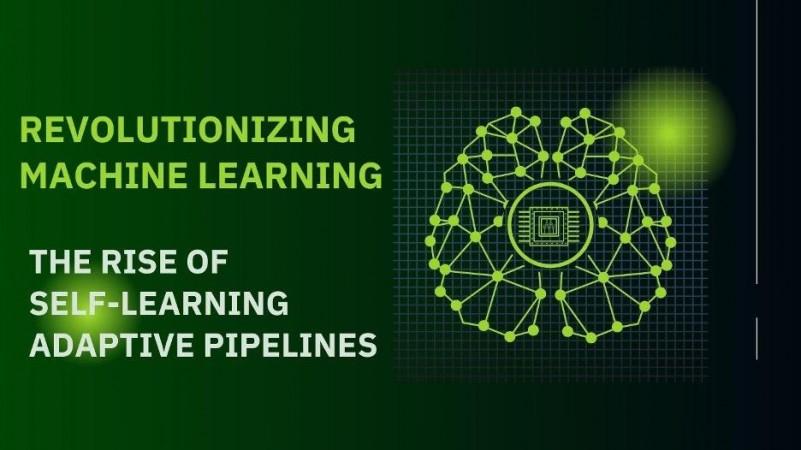
Machine learning (ML) has undergone rapid advancements over recent years, with emerging technologies pushing the boundaries of what's possible. One of the most exciting developments in this field is the introduction of self-learning and adaptive ML pipelines. These pipelines, which offer end-to-end automation from data preprocessing to model comparison, are revolutionizing the efficiency and scalability of machine learning workflows. Anuja Nagpal, a renowned expert in this field, explores these innovations and their profound impact on industries such as finance, healthcare, and e-commerce.
The Core of Adaptive ML Pipelines
Adaptive ML pipelines dynamically adjust and optimize processes in real-time without human intervention, unlike traditional systems that require manual oversight. Powered by self-learning mechanisms, these pipelines handle tasks like data preprocessing, feature engineering, model selection, and hyperparameter tuning autonomously. They clean and encode data, refining features based on characteristics to enhance model accuracy. This automation reduces human error and accelerates development, shortening deployment time by up to 60% and enabling faster, more efficient machine learning workflows.
Dynamic Adjustments and Continuous Learning
Adaptive ML pipelines excel at dynamically adjusting to incoming data, addressing issues like concept drift and shifting data distributions. Using online learning algorithms, these systems update models in real-time as new data arrives, while ensemble methods combine models to enhance accuracy. This continuous learning ability is crucial in sectors like healthcare, where data conditions frequently change. By implementing adaptive pipelines, organizations maintain high model performance without manual retraining, enabling quick, efficient responses to evolving data trends.
Automation of Essential Tasks
A key innovation in adaptive ML pipelines is the automation of labor-intensive tasks like hyperparameter tuning, traditionally time-consuming in machine learning. Using advanced optimization algorithms, such as Bayesian optimization, these pipelines streamline processes, reducing resource requirements for ML development. This automation not only saves time but also enables robust, scalable systems capable of evaluating multiple models simultaneously. In industries like finance and e-commerce, where rapid adaptation is vital, this ensures businesses stay competitive and responsive to changing trends.
Scaling Machine Learning Capabilities
One of the key advantages of adaptive ML pipelines is their ability to scale operations without needing more resources. Traditional ML workflows are limited by human expertise and computational demands, but adaptive pipelines use smart resource allocation to handle larger datasets and deploy more models efficiently. This scalability is especially beneficial for small and medium-sized enterprises (SMEs), reducing their reliance on specialized ML teams and enabling them to implement advanced ML solutions with limited resources.
Democratizing AI Access
One of the major advantages of adaptive ML pipelines is their ability to scale operations without a corresponding increase in resources. Traditional machine learning workflows often require significant human expertise and computational power, making them costly and labor-intensive. Adaptive pipelines, however, optimize resource allocation through automation and intelligent processing strategies, enabling them to efficiently handle larger datasets and deploy numerous models simultaneously. This scalability is particularly valuable for small and medium-sized enterprises (SMEs), as it reduces the need for dedicated ML teams, allowing them to access sophisticated machine learning
solutions that were previously only available to larger organizations with extensive resources.
In conclusion, the evolution of self-learning and adaptive ML pipelines, as highlighted by Anuja Nagpal, points toward a future of fully autonomous, self-improving AI systems. These systems could independently identify areas for improvement, adapt to new data environments, and implement changes in real-time, without human intervention. Such advancements have far-reaching implications, transforming industries and society as a whole. By reducing time and resource requirements, improving scalability, and democratizing AI, adaptive pipelines are expanding the boundaries of AI capabilities. As this technology matures, it holds exciting potential for addressing complex global challenges and driving future innovation across sectors.









!['Had denied Housefull franchise as they wanted me to wear a bikini': Tia Bajpai on turning down bold scripts [Exclusive]](https://data1.ibtimes.co.in/en/full/806605/had-denied-housefull-franchise-they-wanted-me-wear-bikini-tia-bajpai-turning-down-bold.png?w=220&h=138)



